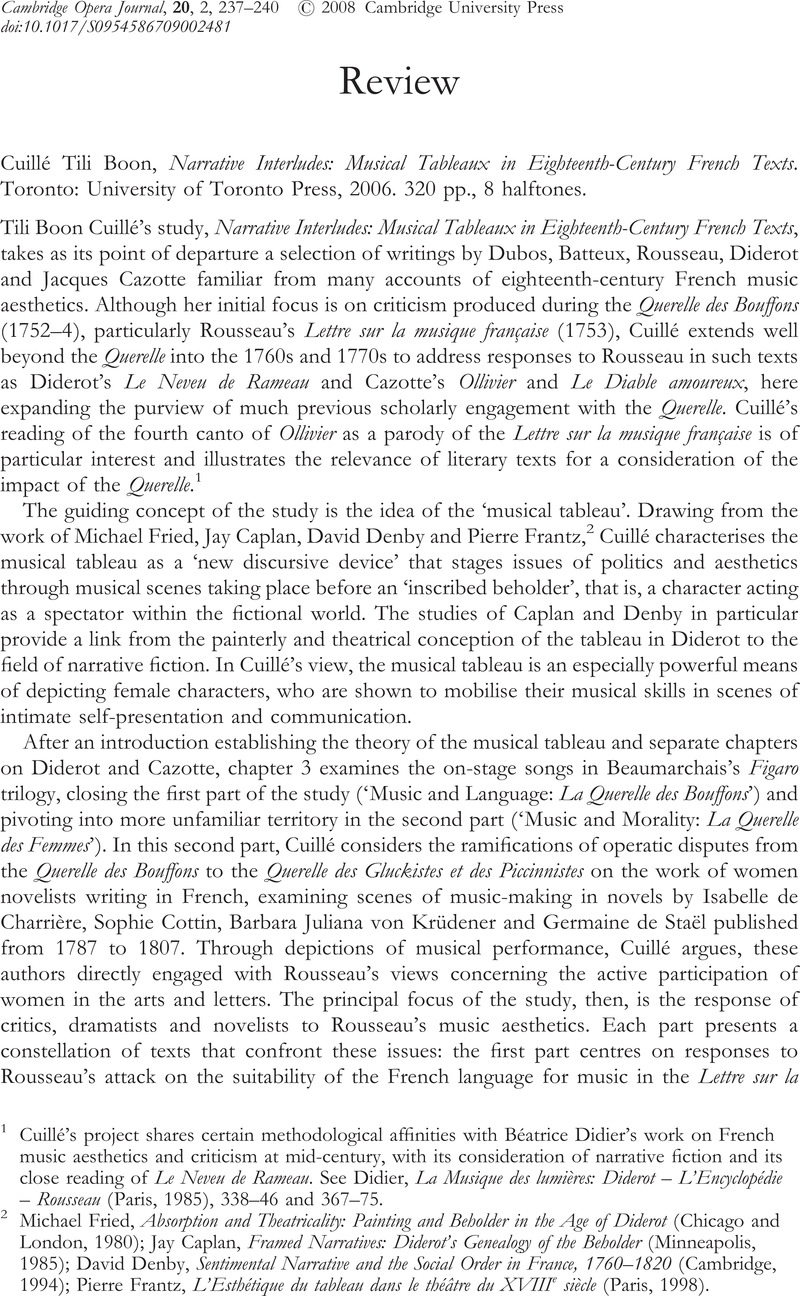No CrossRef data available.
Published online by Cambridge University Press: 01 May 2009

1 Cuillé's project shares certain methodological affinities with Béatrice Didier's work on French music aesthetics and criticism at mid-century, with its consideration of narrative fiction and its close reading of Le Neveu de Rameau. See Didier, La Musique des lumières: Diderot – L'Encyclopédie – Rousseau (Paris, 1985), 338–46 and 367–75.
2 Michael Fried, Absorption and Theatricality: Painting and Beholder in the Age of Diderot (Chicago and London, 1980); Jay Caplan, Framed Narratives: Diderot's Genealogy of the Beholder (Minneapolis, 1985); David Denby, Sentimental Narrative and the Social Order in France, 1760–1820 (Cambridge, 1994); Pierre Frantz, L'Esthétique du tableau dans le théâtre du XVIIIe siècle (Paris, 1998).
3 Part 1, letter 48.
4 As Jacqueline Waeber has demonstrated, Rousseau's reading of the Armide monologue ‘Enfin il est en ma puissance’ in the Lettre is guided by the tacit model of récitatif obligé, a conception of recitative that Rousseau presented more explicitly in the Dictionnaire de musique. See Waeber, ‘L'invention du récitatif obligé, ou comment relire la Lettre sur la musique françoise’, in La ‘Querelle des Bouffons’ dans la vie culturelle française du XVIIIe siècle, ed. Andrea Fabiano (Paris, 2005), 187–203.